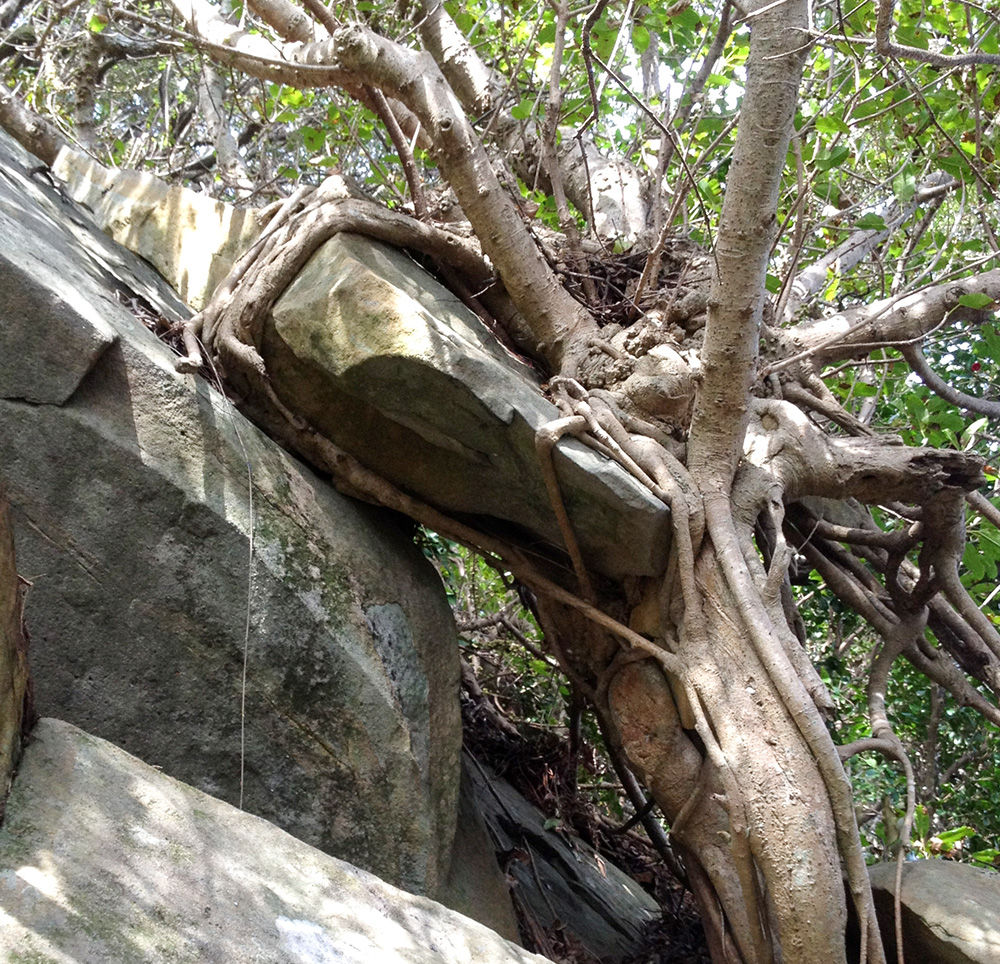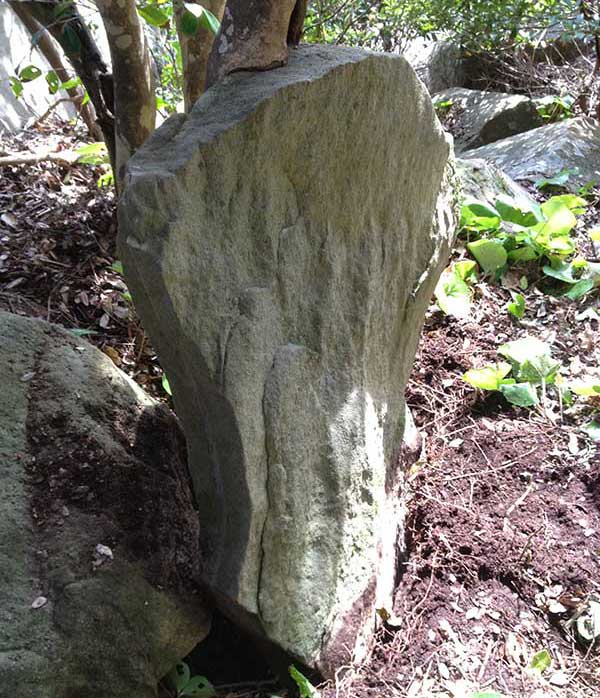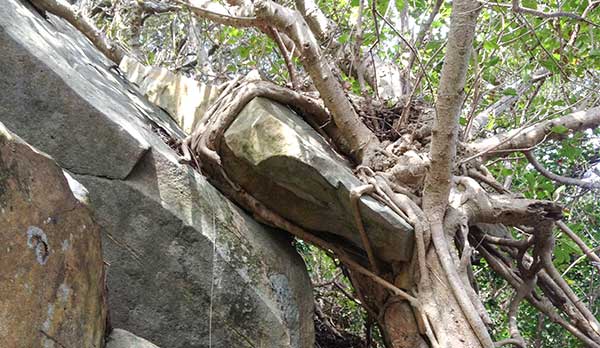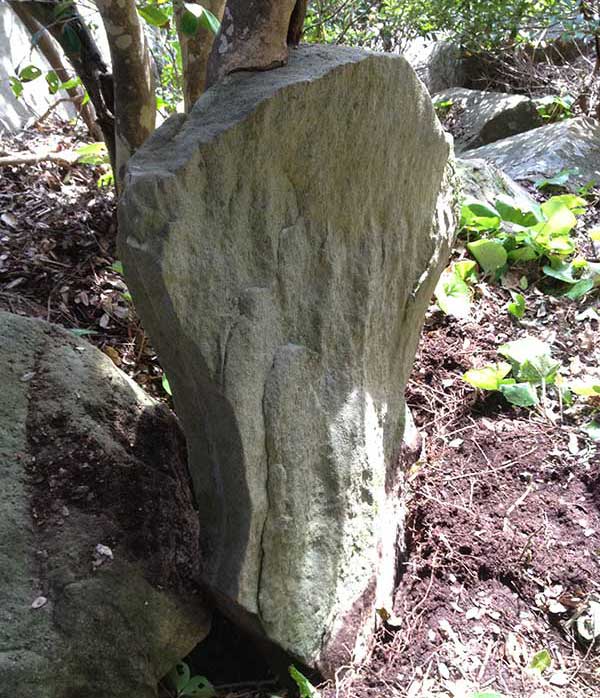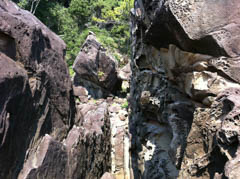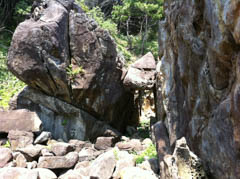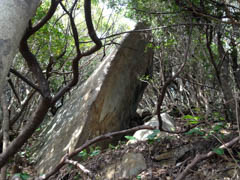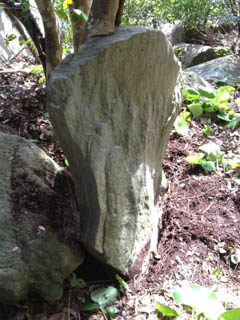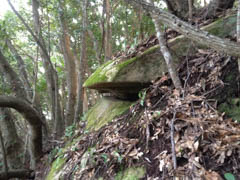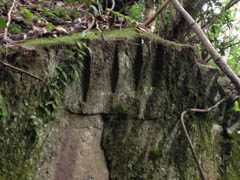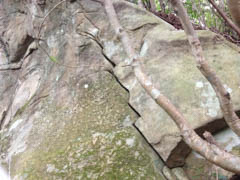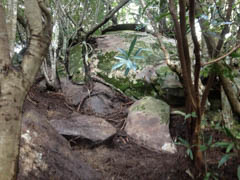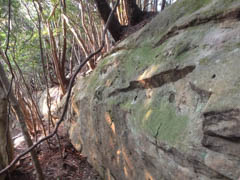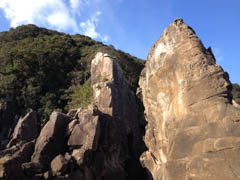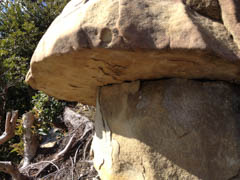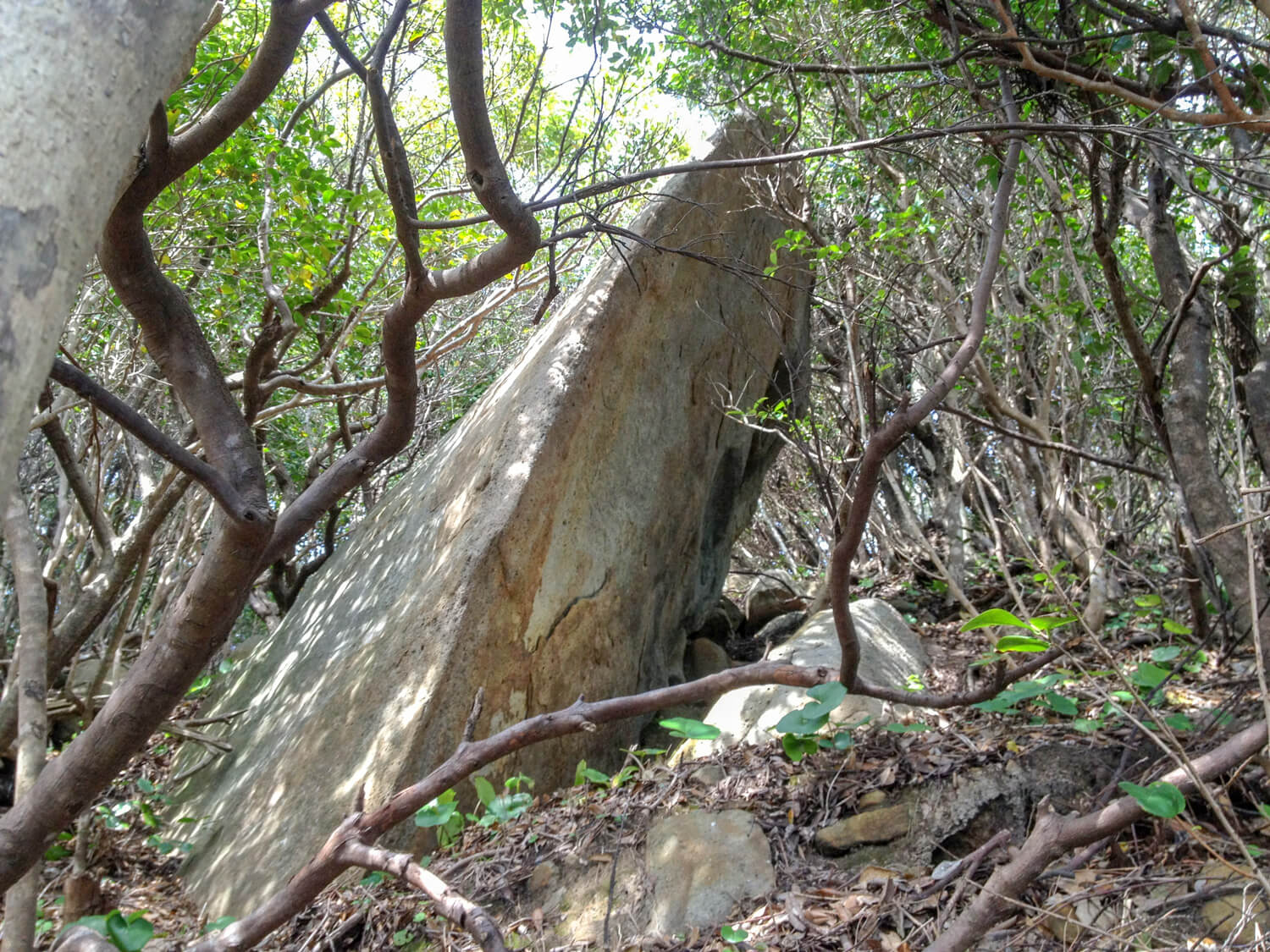Rock
The Summit Stone and the Monk Rock
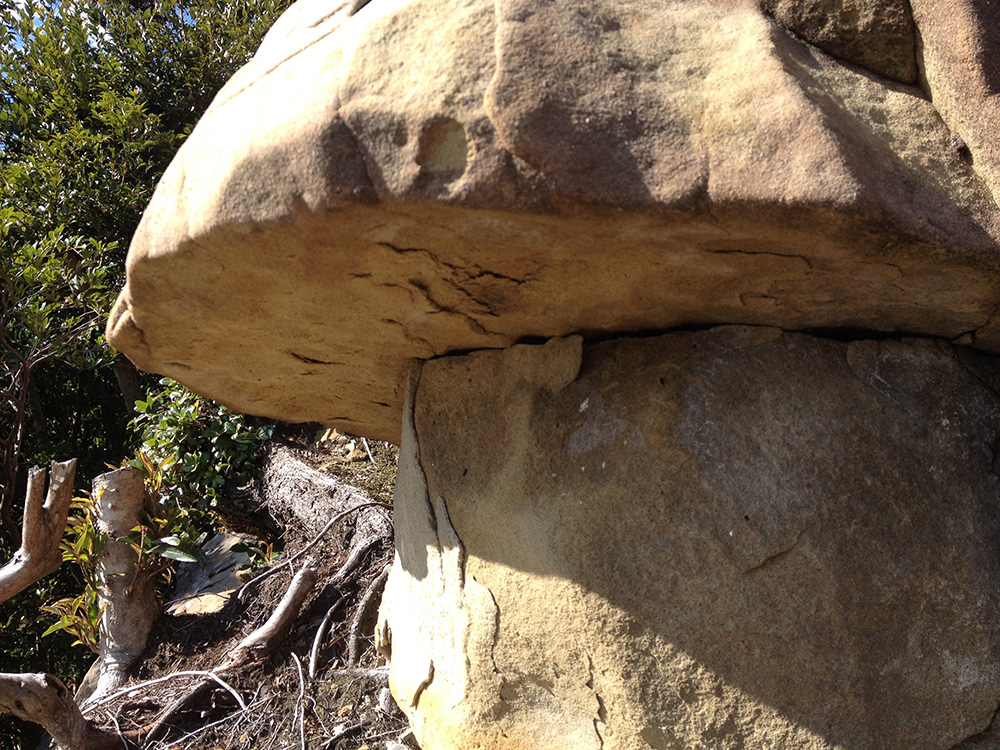 Takegashima Island is what is known as a "rock museum," that is the home to rocks of such unique shapes and sizes that it would not be an exaggeration to say that there are rocks everywhere on the island. The most notable is the "summit stone" located at the top of the island, right next to the observation deck. It may be difficult to see from the side when it is surrounded by thick weeds, but the sight is as beautiful as a hat worn by a monk. Since the stone is located at the top of the island, it is questionable whether this rock is really a product of nature.
Takegashima Island is what is known as a "rock museum," that is the home to rocks of such unique shapes and sizes that it would not be an exaggeration to say that there are rocks everywhere on the island. The most notable is the "summit stone" located at the top of the island, right next to the observation deck. It may be difficult to see from the side when it is surrounded by thick weeds, but the sight is as beautiful as a hat worn by a monk. Since the stone is located at the top of the island, it is questionable whether this rock is really a product of nature.
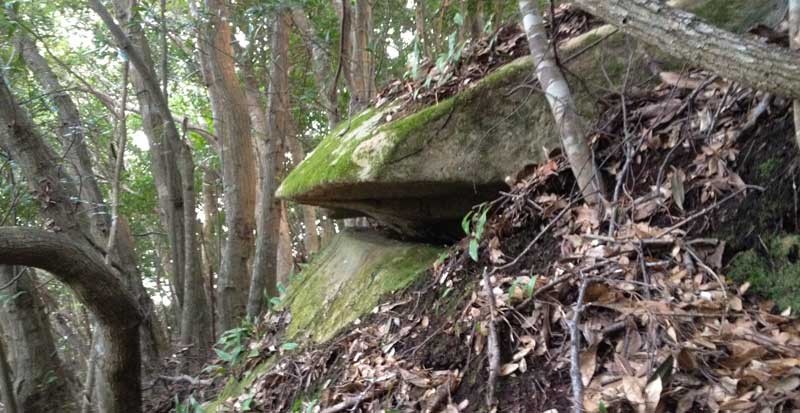
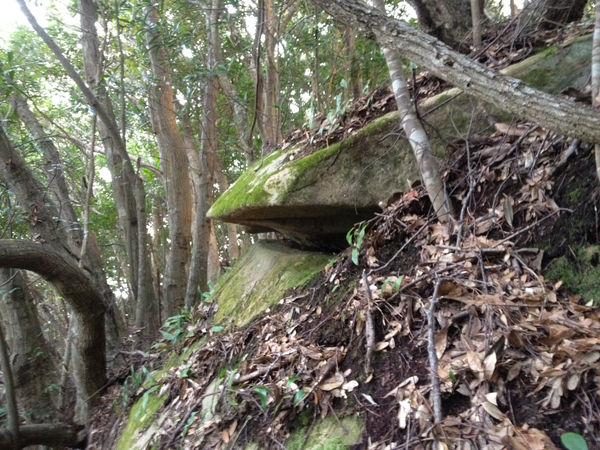
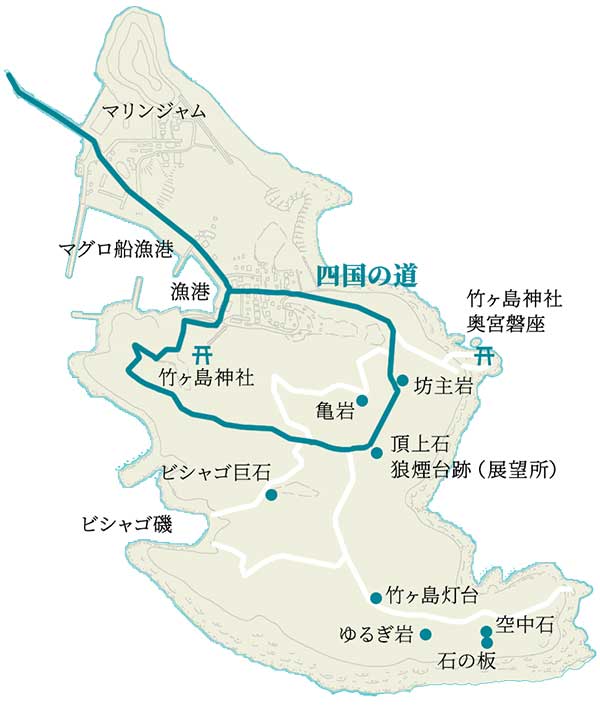 North of the summit stone is the “bozu-iwa” (Monk's Rock) that appears to have a megalith in the shape of a shade equivalent to that of the Summit Stone on top of it. The shade from the megalith protrudes about 30 cm from the main body when viewed from the side, and it seemingly acts as a top cover for the entire megalith with its base almost level to the ground. The location of the Monk Rock along Shikoku Road may have been the site of ritual activities during ancient times. It is worth noting that this site is located directly above the island's sacred site at the rock where the smaller Okumiya shrine of the Takegashima Shrine is located. The straight ascent up the steep slope from Okumiya Shrine along the coast leads to the Monk Rock. Directly below it are stones lined up in a circular shape with a diameter of about 3 meters. It is not clear whether the stones naturally formed a circle or whether they were intentionally placed there by human hands. In any case, since it is located near the top of the island, it was considered to be a megalith in a good place for ancient rituals.
North of the summit stone is the “bozu-iwa” (Monk's Rock) that appears to have a megalith in the shape of a shade equivalent to that of the Summit Stone on top of it. The shade from the megalith protrudes about 30 cm from the main body when viewed from the side, and it seemingly acts as a top cover for the entire megalith with its base almost level to the ground. The location of the Monk Rock along Shikoku Road may have been the site of ritual activities during ancient times. It is worth noting that this site is located directly above the island's sacred site at the rock where the smaller Okumiya shrine of the Takegashima Shrine is located. The straight ascent up the steep slope from Okumiya Shrine along the coast leads to the Monk Rock. Directly below it are stones lined up in a circular shape with a diameter of about 3 meters. It is not clear whether the stones naturally formed a circle or whether they were intentionally placed there by human hands. In any case, since it is located near the top of the island, it was considered to be a megalith in a good place for ancient rituals.

The Giant “Turtle Stone”
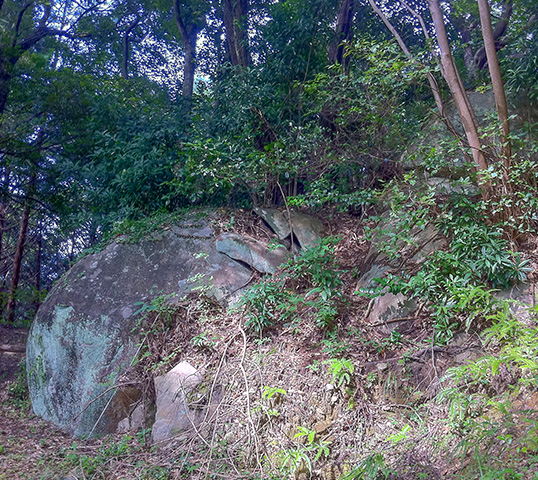 While descending the steps of Shikoku Road from the Monk Rock and heading westward along a mountain path on the way, the huge Turtle Rock along the path will come into view. At first glance, it appears to be an ordinary megalith, but at a closer look, the smooth-surfaced rock is neatly arched and connected in two rows. Ahead of it, another megalith is present, and the countless piles of small rocks at the bottom of the steep slope indicate that this was the site where the rocks were cut down long ago. In ancient and even in modern times when people logged rocks such as granite, they drove wide arrows into the rocks to break them open. By examining the arrow marks left on the rocks, the period when the rocks were logged can be roughly estimated. Based on the arrow marks, it seems that most of the rocks on Takegashima were cut down between the Toyotomi Hideyoshi and Tokugawa periods. The island's rocks continued to be logged until modern times, and the logged rocks were also used in the maintenance of the island.
While descending the steps of Shikoku Road from the Monk Rock and heading westward along a mountain path on the way, the huge Turtle Rock along the path will come into view. At first glance, it appears to be an ordinary megalith, but at a closer look, the smooth-surfaced rock is neatly arched and connected in two rows. Ahead of it, another megalith is present, and the countless piles of small rocks at the bottom of the steep slope indicate that this was the site where the rocks were cut down long ago. In ancient and even in modern times when people logged rocks such as granite, they drove wide arrows into the rocks to break them open. By examining the arrow marks left on the rocks, the period when the rocks were logged can be roughly estimated. Based on the arrow marks, it seems that most of the rocks on Takegashima were cut down between the Toyotomi Hideyoshi and Tokugawa periods. The island's rocks continued to be logged until modern times, and the logged rocks were also used in the maintenance of the island.

Swaying Rocks
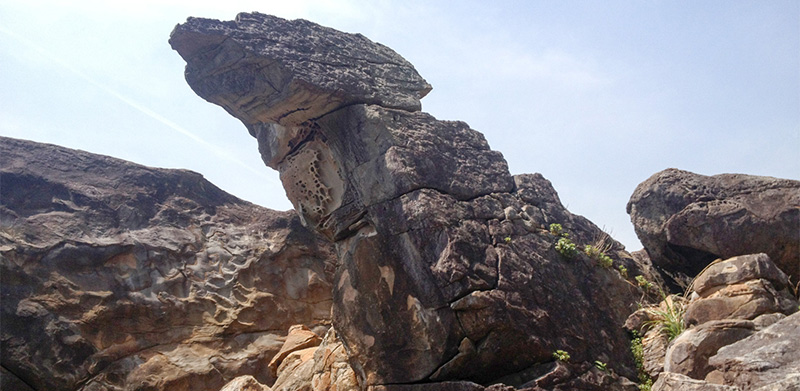
Many rocks are scattered along the Pacific coast in the southern area of the island, forming the foot of the island with rocks of various shapes and sizes. The most striking of these rocks is the "Yurugi Ishi", which is supported just barely in the air and is comparable to the shape of the "Yurugi Ishi" on Gozaisho-dake. It is not known why a boulder of such an appearance exists here, and it seems to be supported in mid-air. This may be another miracle of nature.
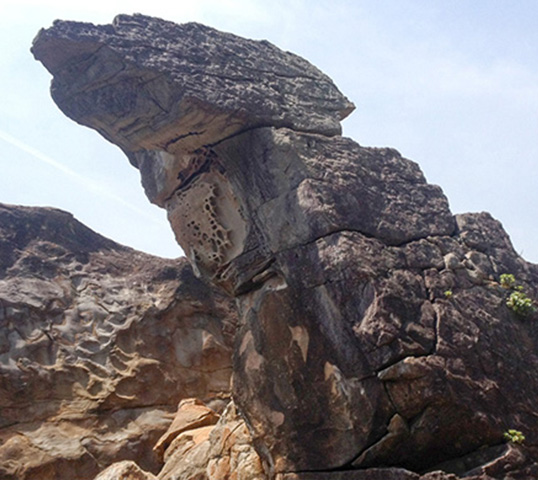
"Aerial Stone" and "Stone Slab"
To the east of the Yurugi Stone, there is an "suspended stone" cradled by tree branches, and directly below it, the "Stone slab" became a part of the tree while leaning against it. The "suspended stone" is a crystallization of nature's power, with the surface of the stone peeling away from the rock and supported by the trees, which in turn create the appearance of being encircled by branches.
